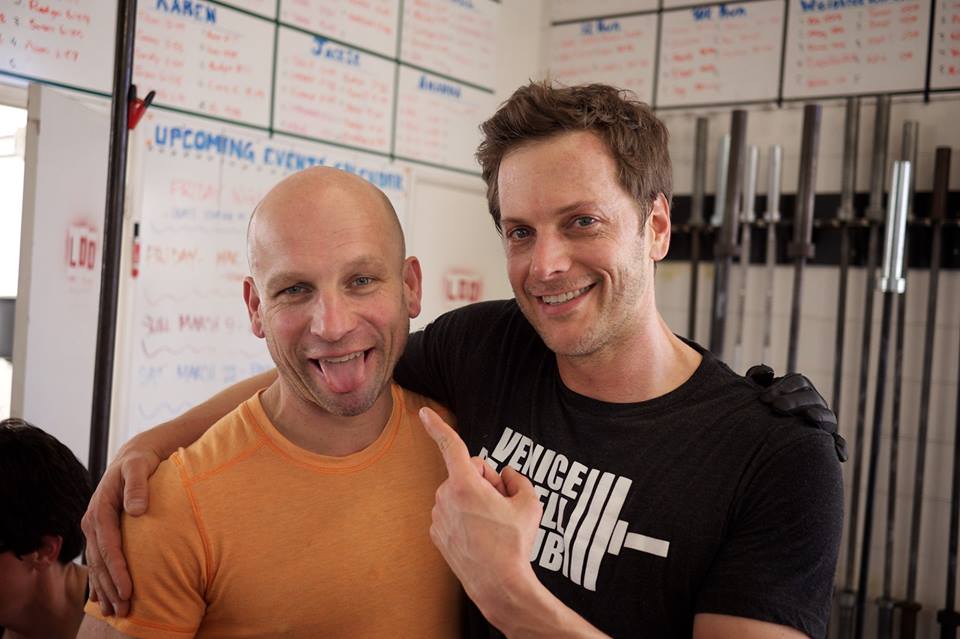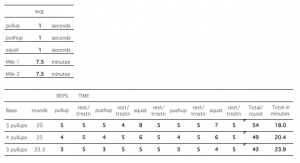Mathcon Manifesto
Track Night at 7pm at SamoHi– Sign up HERE!
Reminder to get your meat orders in by Friday! Click HERE for how this works!
Prehab:
Keg Drill
PVC Dislocates
Monster Walks
Warm Up:
Row 500
10 Good Mornings
10 Back Squats
10 BTN Snatch Grip Push Press
10 OHS
Strength:
15 minutes to establish a heavy 3 position Snatch
-Rest then perform:
EMOM 5 minutes:
3 Hang snatch (above the knee) at 80% from above
Notes: Ideally this is a full squat snatch. Newer athletes should work high to low (High-Hang, Just Above Knee, floor). Advanced athletes can perform low to high. Athletes who have trouble at 2” above knee or are new to class can sub a 2-pos snatch (high-hang, hang only) Prioritize good receiving position overhead. May perform power snatches if needed.
Conditioning:
AMRAP 5 minutes:
5 Toes to bar
10 Push Press (95/65)
15 Squats
Rest 5 minutes
AMRAP 5 minutes:
5 Toes to bar
10 Push press
15 Squats
Notes: Scale weight as needed to keep continual movement. Sub tuck ups or knee ups as needed.
Cool Down:
Theraband Routine
Cobra Stretch 1 min
Foam roll quads
What is Mathcon?
Mathcon was born out of the desire to stop bombing WODs but has grown into something even more defined. Mathcon is a calculated approach to Metcon workouts that minimizes the accumulated rest time. It is intended to score close to your max abilities during benchmark WODs such as Open WODs, Fran, Karen, Murph etc or during multi-wod competitions. It often comes down to being brave enough to take frequent rests to avoid redlining, while being strong enough to commit to short rests. Mathcon artists plot a path towards a desired score plus one or two fallback plans. During the WOD they focus on executing the plan. After the WOD they evaluate the plan and improve it for a next time. Mathcon planning is not unlike how snowboarders plan a half-pipe comp. They plan a run that suit there abilities. Often their first run is conservative, so that they can go all out during the second run. In addition to direct Mathcon approaches, Mathcon also provides a path towards improvement. It starts with shortening your rests, once you have to rests down to 3 seconds it’s time to work on lengthening your sets.
Hmmm that sounds plausible but do you have an example?
Sure, let’s take Murph. Many intermediate athletes have a 40-50 minute Murph time (without weight vest) using common recommended approach “Cindy style”: 20 rounds of 5 pull ups, 10 pushups, 15 squats. We know that this causes people to take rests during pushups and ultimately during the pullups as well. We (the mathcon folk) have cut that time by 5 to 10 minutes by breaking up the pushups into two sets with some squats in between so we only rest during transitions.
20 x 5 Pullups + 5 Pushups + 8 squats + 5 pushups + 7 squats results in the same number of total reps per round as Cindy Style. Each rest is planned and limited to 5 seconds. This adds up to a Murph time of 33 minutes. 15 minutes of running + 10 minutes of movements + 8 minutes of transitions and rest. Shorten rests to 3 or 4 seconds to improve time. Can’t sustain 20 sets of 5 pullups? Drop to 4 pullups a set for 25 sets instead and adjust rep scheme accordingly (see suggestion in the table above).
You said it started from the desire not to “bomb a WOD”, what happened?
2012 was my first open, things went ok till I crashed during 12.4 and barely made it through the 150 Wallballs in 12 minutes. A year later (13.3), and not much wiser, I made it through the 150 Wall balls with just under 2 minutes to spare but I knew I bombed again. A few weeks later the whitebaord read something like “everyone has a plan till they get punched in the face”. I realized I never even had much of a plan and I strongly felt that that statement was no excuse to not make a plan. Just make a better plan next time, was my thought. Shortly thereafter, I started to “secretly” plan WODs and started to gather numbers on movement times and rest times. The 100s WODs during 2013 regionals confirmed I wasn’t completely nuts. Khalipa, Ryan Fisher and many other aces broke up the 100s in sets of 5s and 3s. (yes 3s!) with super short breaks between sets.
Somewhere after the regionals we had a partner WOD that started off with 60 WallBalls each. I told Ryan I’d take us 3 minutes each if we we’d do sets of 5 WBs in 10 seconds with 5 second rest between sets plus we’d be fresh for the remainder of the WOD. We executed sets and breaks to the second and did great on the WOD. At this point I was convinced that could be the method to avoid failure i.e. bombing big time.
The out of the closet moment came when Hynes served us the 150 burpee WOD and I called my time and rep scheme on FB. I was able to stick to the plan to the second till 100 burpees (which was 7 minutes. Just over a year earlier, 100 burpees during 12.1 was borderline elite). I ended up 60 seconds or so behind the plan but still ended with one of the best times of the day. And still minutes behind Tibor, of course.
Do you now Mathcon every WOD?
No Matchcon rep schemes don’t make you stronger or improve your conditioning which are still my training objectives. With most Mathcon schemes you’re working out at moderately intense levels (think 5K hard rate) of the metcon and only push it to 100% the last minute. Additionally some WODs such as Grace or Isab el aren’t well suited for Mathcon because they are all explosive movements. You don’t want to clean at moderate intensity. I reserve Mathcon for benchmark WODs (Most Girls & Heroes) or multi-WOD events (i.e competitions). However, during regular WODs, I’m always taking inventory of rep frequencies such as how many box jumps/wall balls/burpees in a minute etc. . In that sense most training days are mathcon data gathering days.
Why do you say it’s mainly for intermediate Athletes?
Well one of the reason me and some friends kept not doing so well as we felt we could have during certain WODs was that we followed advice aimed at elite athletes. The curse of the internet, you could say. Sadly that advice did not work well. For most of us It’s great to try and go unbroken as long as you can during Fran but unless you’re Josh Kovach or beyond, you’ll pass out during the round of 15 or are forced to take long breaks. That’s how you end up with a 9:59 minute Fran time, where shorter sets and short breaks can comfortably get you to a sub 5 minute score.
Mathcon rep schemes are not super useful for beginners either. In the beginning you’re better off figuring out training to recovery ratios and understanding cause and effect on your progress as you vary training and recovery days than concerning yourself with rep schemes. Once you’ve worked up to being comfortable training 4 to 5 times a week and can perform standard WODs RX or close to it, Mathcon rep schemes can help you.
Lastly, there was a lot of activity on the mathcon Facebook group during the open, how did that start?
The FB group started 10 months ago and it used to be a small crew of less than 20 people posting a few things a month about ideas for WOD strategies . When 14.1 was announced, we shared our ideas as before. Right after 14.1 the group started to grow rapidly, many more became very curious about the “secret sauce”. Throughout this open season it grew to 125+ people, including many non-PCFers. The secret sauce is merely to find a way to keep breathing but it can be formulated in many ways. The objective of the FB group is still to discuss WOD and Competition strategies for the masses. I hope that throughout this summer people will keep posting about local comps and approaches to benchmark WODs so that it keeps being useful beyond the Open season .


















